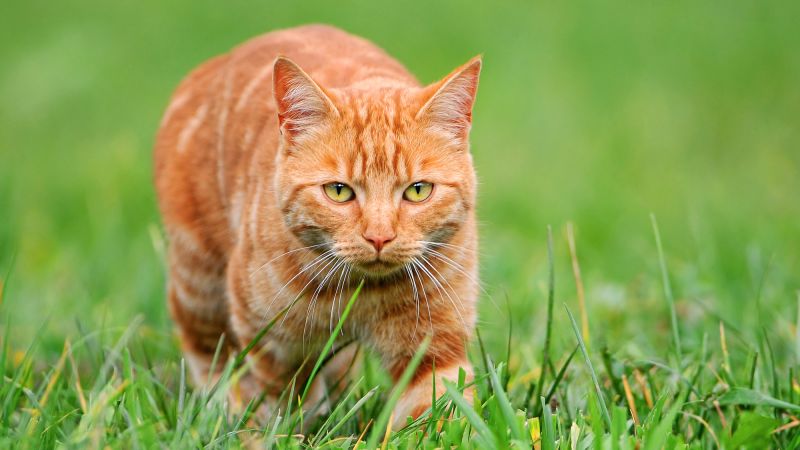
STANFORD, Calif. – In a groundbreaking study, scientists have identified the genetic mutation responsible for the distinctive orange hue of ginger cats, a trait that has puzzled geneticists for decades. This discovery not only sheds light on the peculiar coloration of these felines but also opens new avenues for understanding genetic mutations in other species.
Breaking: Genetic Mutation Uncovered
The study, published in the journal Current Biology on May 15, reveals that the genetic variant responsible for orange cats’ coloration is a unique mutation not found in any other animal. This mutation occurs on the X chromosome, a finding that has intrigued scientists due to its rarity and specificity.
“This is a really unusual type of mutation,” said Christopher Kaelin, lead study author and senior scientist in genetics at Stanford University.
Immediate Impact on Feline Genetics
The revelation that the orange coloration is linked to a specific DNA mutation provides a deeper understanding of feline genetics. Most orange cats are male because the genetic code for orange is carried on the X chromosome. Male cats, having one X and one Y chromosome, will display the orange trait if it is present on their single X chromosome.
Female cats, with two X chromosomes, must inherit the trait from both parents to be completely orange, a rarity that explains why most female orange cats exhibit calico or tortoiseshell patterns.
Key Details Emerge
Research conducted by Kaelin and his team involved collecting DNA samples from orange cats over a decade. By comparing these samples with previously sequenced feline genomes, they identified 51 genetic variations on the X chromosome shared by orange males. However, only three of these variations were unique to orange cats.
One significant discovery was a 5,076-base pair deletion, which, although not within a gene, was located near the Arhgap36 gene. This gene regulates an important hormone signaling pathway but is not typically associated with pigmentation.
Industry Response and Expert Analysis
The study’s findings have been met with enthusiasm from the scientific community. Hannes Lohi, a professor of veterinary biosciences and genetics at the University of Helsinki, stated that the variants identified could serve as valuable tools in tracing domestic feline evolutionary history.
“The goal is not only to learn about the mutation,” noted Greg Barsh, senior study author and professor emeritus of genetics and pediatrics at Stanford, “but also to understand mutational mechanisms in general.”
By the Numbers: Genetic Anomalies
- The deletion affects about 0.005% of the X chromosome.
- 51 genetic variations were identified, with three unique to orange cats.
- Orange cats have been depicted in art dating back to the 12th century.
What Comes Next
Moving forward, Kaelin and his collaborators aim to explore how a small deletion outside a gene can influence the activity of a nearby gene. This research could have broader implications for understanding genetic conditions in humans and other species.
While the study has not directly linked the genetic mutation to the personality traits of orange cats, it provides a foundation for future research into potential behavioral associations with coat color.
“I think orange cats have really convinced their owners that they’re different, but they’ve yet to convince us,” Kaelin remarked.
The discovery of this unique genetic mutation in orange cats marks a significant milestone in the field of genetics, offering insights that could extend beyond the world of felines.







